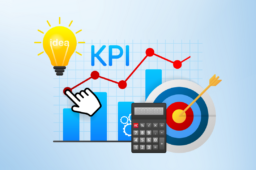
How to Balance Time, Cost, and Scope for Project Success?
- October 28, 2024
- by
- tehreem
In any project, time, cost, and scope are often at odds. Trying to prioritize one can easily disrupt the others. For instance, shortening the project timeline might require additional resources, driving up the costs, or reducing the scope to maintain the deadline.
This constant push-and-pull between time, cost, and scope can be frustrating. Project managers often find themselves caught in a juggling act, where giving more attention to one constraint weakens control over the others. Projects may end up delayed, over budget, or compromised in quality.
With strategic planning and the right tools, project managers can balance these three critical constraints and achieve project success. Let’s break down how to manage each element of the project management triangle.
Time: Managing Project Deadlines Effectively
Time is one of the most visible constraints in any project. Meeting deadlines is essential for maintaining momentum and keeping stakeholders satisfied. However, mismanaging time can lead to cascading delays that affect the entire project.
To effectively manage time:
- Set realistic timelines: Use tools like the Critical Path Method (CPM) and Gantt charts to visualize task dependencies and track progress.
- Monitor regularly: Regularly review project milestones and adjust schedules as needed. Tracking tools like time tracking software can help you maintain control.
- Build in buffers: Unexpected issues are inevitable. Including contingency time in your schedule will help absorb delays without derailing the entire project.
Proper time management ensures tasks are completed on time, which helps in maintaining the balance between the other two constraints—cost and scope.
Cost: Keeping the Budget in Check
Project costs are often the first concern for stakeholders. Managing the project budget involves tracking expenses, preventing overruns, and justifying additional spending when necessary.
Here’s how to stay on top of project costs:
- Create a detailed budget plan: Consider every potential expense, from labor and materials to software tools and overheads. Use historical data and industry benchmarks to inform your estimates.
- Monitor expenses in real-time: Real-time expense tracking tools allow you to catch potential budget overruns early. Tools like Earned Value Management (EVM) can help you measure project performance in terms of both cost and time.
- Control resources: Effective resource allocation helps prevent waste and ensures you’re making the most of your budget. Consider reassigning or reducing resources if you find you’re spending more than planned.
Maintaining cost control while managing scope and time is key to delivering the project within budget without compromising on deliverables.
Scope: Defining and Managing Project Deliverables
Scope refers to the work required to complete a project. Managing scope is critical for project success, as it directly affects both time and cost. Scope creep—where additional features or requirements are added to the project after it has started—can derail even the most well-planned projects.
To manage project scope:
- Clearly define the project scope: At the outset, define exactly what needs to be delivered. This includes identifying the project’s objectives, deliverables, and timelines. Clarity on scope prevents misunderstandings and unrealistic expectations later.
- Implement a change control process: Any changes to the project scope should be carefully reviewed and approved by all stakeholders. This prevents scope creep and helps keep the project on track.
- Communicate regularly with stakeholders: Keeping everyone updated on progress helps prevent last-minute changes and ensures the scope remains aligned with stakeholders’ needs.
By keeping the scope well-defined and controlled, project managers can balance the time and cost without compromising on quality.
The Fourth Element: Quality and the Triple Constraint
While the project management triangle focuses on time, cost, and scope, quality is often considered the “fourth constraint.” High-quality results are the goal of any project, but balancing quality with time and budget constraints can be challenging.
To ensure quality:
- Set clear quality standards from the start: Define the level of quality expected for each deliverable, and make sure that all stakeholders agree on these standards.
- Review regularly: Regular reviews during the project allow you to identify any quality issues early and address them before they become major problems.
- Don’t sacrifice quality for time or cost: Cutting corners to meet deadlines or save money can lead to poor-quality deliverables, which may result in additional costs and delays down the line.
Focusing on quality helps ensure project success, even when balancing tight constraints.
Strategic Approaches to Balancing the Triangle
To achieve project success, you’ll need strategies to manage time, cost, and scope effectively. Some useful approaches include:
- Earned Value Management (EVM): This method tracks project performance in terms of cost and time, giving you insight into whether the project is on track.
- Work Breakdown Structure (WBS): A WBS helps break down the project into manageable tasks, making it easier to monitor progress and control costs.
- Regular reviews: Periodically reviewing your project’s progress in terms of time, cost, and scope allows you to make adjustments before small problems turn into major issues.
Strategic planning is essential for keeping all aspects of the project management triangle balanced.
Common Challenges and How to Overcome Them
Managing the project management triangle is not without challenges. Here are a few common issues and how to overcome them:
- Scope creep: Implementing a strict change control process helps prevent unplanned additions to the project scope.
- Inaccurate time estimates: Use historical data and task dependencies to improve time estimates.
- Budget overruns: Track expenses in real-time and adjust resource allocations as necessary.
By addressing these challenges, project managers can maintain control over time, cost, and scope and ensure project success.
Tools to Help You Manage Time, Cost, and Scope
Using the right tools can help you manage the project management triangle more effectively. Some popular project management tools include:
- Asana: Ideal for task management and progress tracking.
- ONtezo: A powerful tool for managing timelines, costs, and deliverables.
- Trello: A visual task management tool that helps teams stay organized and on track.
These tools streamline project management and help you maintain control over time, cost, and scope.
FAQs
What is the project management triangle?
The project management triangle refers to the constraints of time, cost, and scope, which must be balanced for successful project delivery.
How do I prioritize between time, cost, and scope?
Prioritizing depends on the project’s specific goals and constraints. For some projects, meeting deadlines is most important, while for others, staying within budget is critical.
What happens if one of the three constraints is not met?
If time, cost, or scope is not managed properly, the project may experience delays, budget overruns, or failure to meet stakeholder expectations.
Striking the Perfect Balance
Balancing time, cost, and scope is essential for achieving project success. By setting clear expectations, using the right tools, and regularly reviewing progress, project managers can ensure that projects are delivered on time, within budget, and to the required scope—without sacrificing quality.







2 Comments
5 Ways to Enhance Remote Project Management - Ontezo Blogs
5th Nov 2024 - 10:33 am[…] How to Balance Time, Cost, and Scope for Project Success? […]
A Guide to Using Kanban Boards for Better Visual Project Management - Ontezo Blogs
13th Nov 2024 - 10:15 am[…] Tasks: Arrange tasks based on deadlines and importance to ensure the most critical work is completed […]